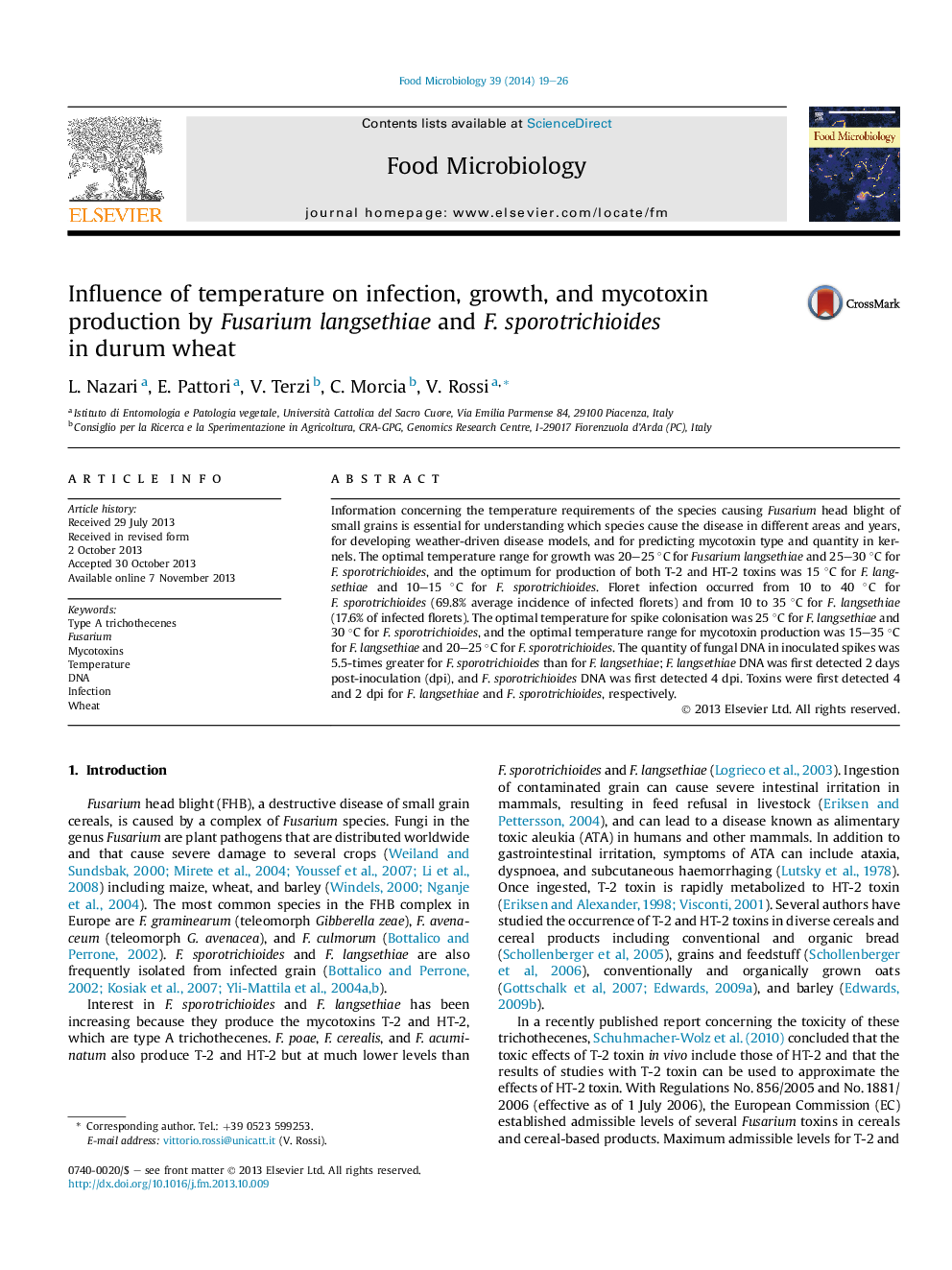| Article ID | Journal | Published Year | Pages | File Type |
|---|---|---|---|---|
| 6288729 | Food Microbiology | 2014 | 8 Pages |
Abstract
Information concerning the temperature requirements of the species causing Fusarium head blight of small grains is essential for understanding which species cause the disease in different areas and years, for developing weather-driven disease models, and for predicting mycotoxin type and quantity in kernels. The optimal temperature range for growth was 20-25 °C for Fusarium langsethiae and 25-30 °C for F. sporotrichioides, and the optimum for production of both T-2 and HT-2 toxins was 15 °C for F. langsethiae and 10-15 °C for F. sporotrichioides. Floret infection occurred from 10 to 40 °C for F. sporotrichioides (69.8% average incidence of infected florets) and from 10 to 35 °C for F. langsethiae (17.6% of infected florets). The optimal temperature for spike colonisation was 25 °C for F. langsethiae and 30 °C for F. sporotrichioides, and the optimal temperature range for mycotoxin production was 15-35 °C for F. langsethiae and 20-25 °C for F. sporotrichioides. The quantity of fungal DNA in inoculated spikes was 5.5-times greater for F. sporotrichioides than for F. langsethiae; F. langsethiae DNA was first detected 2 days post-inoculation (dpi), and F. sporotrichioides DNA was first detected 4 dpi. Toxins were first detected 4 and 2 dpi for F. langsethiae and F. sporotrichioides, respectively.
Related Topics
Life Sciences
Agricultural and Biological Sciences
Food Science
Authors
L. Nazari, E. Pattori, V. Terzi, C. Morcia, V. Rossi,
